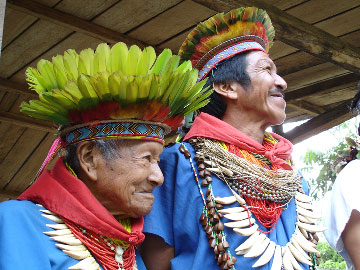Colombia creates rainforest reserve to protect medicinal plants
Colombia creates rainforest reserve to protect medicinal plants
Rhett A. Butler, mongabay.com
June 12, 2008
Colombia today announced the creation of a rainforest reserve dedicated to the protection of medicinal plants.
The Orito Ingi-Ande Medicinal Flora Sanctuary encompasses 10,626 hectares of biologically-rich tropical rainforest ranging in altitude from 700 to 3300 meters above sea level. The sanctuary is based on an initiative launched by local indigenous communities with the support of the Amazon Conservation Team (ACT), an innovative NGO working with native peoples to conserve biodiversity, health, and culture in South American rainforests. Members of the communities — which include the Kofán, Inga, Siona, Kamtsá, and Coreguaje tribes — combined their rich knowledge of medicinal plants with cutting-edge technology to determine the placement and extent of the reserve. Their contributions to the effort are reflected in the name of the reserve, according to ACT.
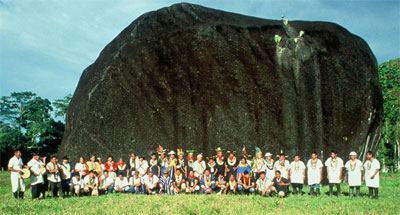 The Union of Yagé Healers of the Colombian Amazon (UMIYAC) is the result of the ACT-sponsored Gathering of Shamans that took place in 1999 in Yurayaco, Caqueta. At the Gathering, 40 of the most prominent indigenous healers from seven tribes met for the first time to discuss the future of their forest, their medicine and their people. There they jointly signed a declaration that has become the basis of their alliance. |
“The name ‘Ingi-Ande,’ which means ‘our territory’ in the language of the Kofán people, is being used to underscore the robust participation of local indigenous peoples in the design and declaration of the sanctuary, part of which lies on Kofán ancestral lands and is long celebrated in their rich oral traditions,” said ACT in a statement. “The process of creating, designing, and declaring the Orito Ingi-Ande sanctuary has been the result of a coordinated effort among the Ministry of the Environment, Housing, and Territorial Development; the Special Administrative Unit of the Colombian National Park System; the Amazon Conservation Team (ACT); Rosario University; and especially the Union of Traditional Yagé Healers of the Colombian Amazon (UMIYAC), whose traditional healers and apprentices provided the support and knowledge necessary to undertake the process.”
Orito Ingi-Ande will be the only protected area in Colombia dedicated primarily to the conservation of medicinal flora. ACT says that special emphasis was put on the presence of the yoco plant (Paullinia yoco), a liana that is one of the most highly regarded medicinal plants in the northwest Amazon.
“Yoco can be considered a ‘keystone’ species in terms of conservation, necessitating the protection of the surrounding ecosystem,” said Jose Pablo Jaramillo, Program Director of ACT-Colombia.
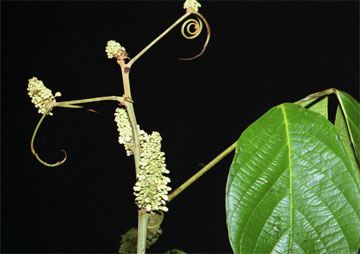 The Yoco plant. 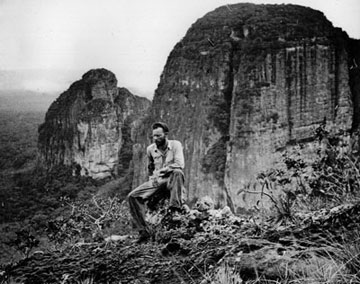 Famed ethnobotanist Richard Evans Schultes did the original field work on Yoco and co-wrote the botanical description of the plant.
|
Indigenous groups used GPS units to map the occurrence of yoco plants and other important medicinal plants identified by shamans, or indigenous healers. By combining technology with traditional plant knowledge, the effort helped strengthen cultural ties between indigenous youths and elders at a time when such cultures are disappearing even faster than rainforests.
“GPS can help you mark the geographic coordinates of a location but all the technology in the world is not going to explain to you the spiritual significance of a spot or identify what plants can be used for what purpose,” said Maria Elvira Molano, an anthropologist who has been working in the process of creating Orito on the part of the National Parks Service and is the liaison with ACT. “This is where the elders come in — they are the ones with the knowledge. Now we’re seeing the shamans appreciated as tremendous sources of knowledge by the younger generation as well as government agencies seeking to protect forest areas.”
ACT calls this approach, which protects biodiversity, improves traditional health systems, and helps preserve culture in a holistic and synergistic way, “biocultural conservation.”
“Biocultural conservation has been the most overlooked approach to rainforest conservation, and the establishment of the Inge-Ande Reserve shows that this methodology is finally gained traction,” said Mark Plotkin, president of ACT. “It’s our strong belief that the people who best know, use, and protect biodiversity are the indigenous people who live in these forests.”
Related articles
Amazon Conservation Team wins “Innovation in Conservation Award” for path-breaking work with Amazon tribes
(12/11/2007) The Amazon Conservation Team (ACT) was today awarded mongabay.com’s inaugural “Innovation in Conservation Award” for its path-breaking efforts to enable indigenous Amazonians to maintain ties to their history and cultural traditions while protecting their rainforest home from illegal loggers and miners.
Amazon rainforest children to get medicinal plant training from shamans
(11/21/2007) The Amazon Conservation Team (ACT) — a group using innovative approaches to preserving culture and improving health among Amazonian rainforest tribes — has been awarded a $100,000 grant from Nature’s Path, an organic cereal manufacturer. The funds will allow ACT to address one of the most pressing social concerns for Amazon forest dwellers by expanding its educational and cultural “Shamans and Apprentice” program for indigenous children in the region.
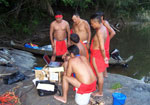 |
Amazon Indians use Google Earth, GPS to protect forest home
(11/14/2006) Deep in the most remote jungles of South America, Amazon Indians are using Google Earth, Global Positioning System (GPS) mapping, and other technologies to protect their fast-dwindling home. Tribes in Suriname, Brazil, and Colombia are combining their traditional knowledge of the rainforest with Western technology to conserve forests and maintain ties to their history and cultural traditions, which include profound knowledge of the forest ecosystem and medicinal plants. Helping them is the Amazon Conservation Team (ACT), a nonprofit organization working with indigenous people to conserve biodiversity, health, and culture in South American rainforests.
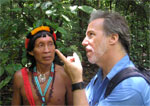 |
Indians are key to rainforest conservation efforts says renowned ethnobotanist
(10/31/2006) Tropical rainforests house hundreds of thousands of species of plants, many of which hold promise for their compounds which can be used to ward off pests and fight human disease. No one understands the secrets of these plants better than indigenous shamans -medicine men and women – who have developed boundless knowledge of this library of flora for curing everything from foot rot to diabetes. But like the forests themselves, the knowledge of these botanical wizards is fast-disappearing due to deforestation and profound cultural transformation among younger generations. The combined loss of this knowledge and these forests irreplaceably impoverishes the world of cultural and biological diversity. Dr. Mark Plotkin, President of the non-profit Amazon Conservation Team, is working to stop this fate by partnering with indigenous people to conserve biodiversity, health, and culture in South American rainforests. Plotkin, a renowned ethnobotanist and accomplished author (Tales of a Shaman’s Apprentice, Medicine Quest) who was named one of Time Magazine’s environmental “Hero for the Planet,” has spent parts of the past 25 years living and working with shamans in Latin America. Through his experiences, Plotkin has concluded that conservation and the well-being of indigenous people are intrinsically linked — in forests inhabited by indigenous populations, you can’t have one without the other. Plotkin believes that existing conservation initiatives would be better-served by having more integration between indigenous populations and other forest preservation efforts.
How did rainforest shamans gain their boundless knowledge on medicinal plants?
(5/14/2005) For thousands of years, indigenous people have extensively used rainforest plants for their health needs — the peoples of Southeast Asian forests used 6,500 species, while Northwest Amazonian forest dwellers used 1300 species for medicinal purposes. Perhaps more staggering than their boundless knowledge of medicinal plants, is how shamans and medicinemen could have acquired such knowledge. There are over 100,000 plant species in tropical rainforests around the globe, how did indigenous peoples know what plants to use and combine especially when so many are either poisonous or have no effect when ingested. Many treatments combine a wide variety of completely unrelated innocuous plant ingredients to produce a dramatic effect.
